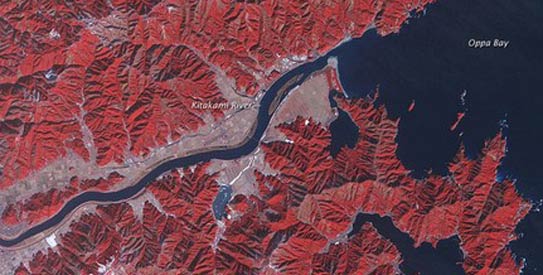
JERUSALEM: Scientists in Israel have developed a way of using satellite images to help farmers detect small-scale changes in climate and improve their harvests, a method that could bolster food supplies for an increasingly hungry world population.
Rather than analyse the weather and topography of large swathes of land, the new system divides fields into smaller microclimates that guide farmers on the best way to work each individual plot.
It tells them when it is best to plant seeds, when to spray pesticides and even which crop is most suitable for each square-kilometre field, said Uri Dayan, a climatologist from Hebrew University in Jerusalem.
Since the method was published in the Bulletin of the American Meteorological Society in September, Dayan and co-developer Itamar Lensky have been working to develop it into a global interface that will help farmers on any continent.
The UN Food and Agriculture Organization (FAO) has said that global food output must increase by 70 percent by 2050 to meet the needs of an expected 9.1 billion people.
Crops are very sensitive to their environment and even the slightest changes can ruin a harvest. Factors like pests, pathogens and weeds cause the loss of more than 40 percent of the world's food supply, the FAO says.
Even two adjacent fields that appear identical could contain individual microclimates which require separate attention to maximize production, Dayan said.
Lensky, who heads the remote sensing laboratory at Bar Ilan University near Tel Aviv, said their system uses real-time thermal images made available from NASA and then analyses the surface temperature of each plot at a fine scale.
“Once we understand how nature works, we pack it into an algorithm, and the results of this algorithm we can give to the farmers,” he said.
In one application, their system mapped a patch of land that it forecast would be attacked - and when - by the harmful heliothis, a moth that causes billions of dollars of damage to global agriculture each year. This knowledge allows a more effective use of pesticides.
Once the scientists find a partner for development, a global interface to guide farmers could be up and running in a couple of years. The system will improve as satellite pictures are taken with higher resolution, they said.
Gideon Yisrael, who has worked the fields of central Israel for 40 years, called the development a game-changer.
“It will provide farmers with a good measurement for making good decisions and hopefully bring them more success and more harvest,” he said.











































Dear visitor, the comments section is undergoing an overhaul and will return soon.